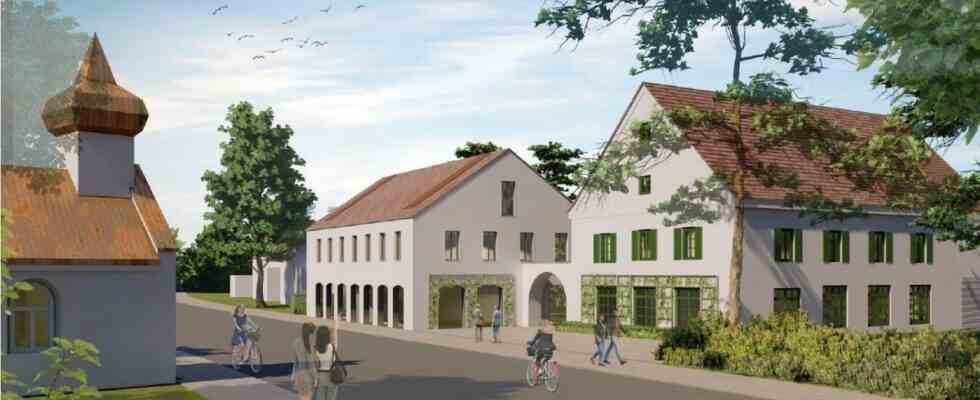It should be an architectural gem that breathes history even before the first resident moves in – the new Geiselgasteig ensemble at the entrance to Grünwald with the building of the historic, but no longer operated restaurant “Grünwalder Einkehr” in the middle. If you want to know what will be created on the approximately 3,000 square meter site on Nördliche Münchner Straße, you could take a look at postcards that are more than a hundred years old and show the old ensemble with the inn, Salettl and chapel, making it a popular destination for Munich residents already in the early 20th century. This is roughly what it should look like here when the keys are handed over in two or three years. In its meeting on Tuesday evening, the municipal council unanimously decided to approve the designs presented by Laurent Brückner from the architects’ office of the same name and to prepare a public display of the plans.
A mix of residential and commercial is planned
As was the case two weeks earlier in the Planning and Development Committee, the members of the municipal council were all very impressed by the drafts. Alexander Steininger (CSU) even spoke of a “stroke of luck for the community”. It will be a four-sided courtyard with three buildings, in which mainly apartments will be built, but also commercial areas on the street side. The new owners have made it their task to maintain the character of the Grünwalder Einkehr and the entire ensemble. The use for the ensemble has not yet been determined in detail. It is clear, however, that it will be a mixture of residential and commercial, although the latter has not yet been defined, said Brückner. However, the preservation of the historic inn was not the original intention of the group of investors, who wanted to have the building demolished, whereupon the municipality quickly issued a ban on changes in this area and the investors finally had to abandon this project, especially after the state monument council had ordered the inn together with the opposite chapel Heilig Blut to the “Ensemble Geiselgasteig” and the then arts minister Bernd Sibler (CSU) also got involved.
The new concept is now all the better for Mayor Stefan Neusiedl (CSU) and the municipal council. Bringing the postcard motif into the present in terms of design can now be formulated as a project that is to be promoted with the appropriate architectural language. Even the historically documented avenue situation will be restored along the street, Brückner announced. The building materials should also bridge the gap between urban life and rural character. According to the plan, the appearance will be characterized by quiet tiled roofs without visible skylights on the side facing the street, white plaster structures and wooden elements. The historic windows, which will do without shutters, will also be preserved. Sun protection is guaranteed by special glazing with anti-glare protection on the inside. In the end, the original but lost impression of a Schwaige should be recreated. The plans will be made public in November.

